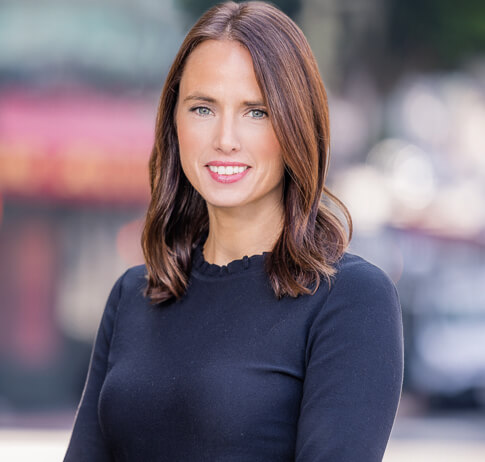This article was initially published by Law360 on December 17, 2018.
In what appears to be a nationwide trend, California is the latest state to signal its willingness to grant protection to street artists. In Falkner v. General Motors LLC, a California district court recently ruled that a graffiti artist may move forward with a copyright infringement lawsuit against General Motors.
The plaintiff-artist, Adrian Falkner, who is also known as "Smash 137," was invited by an art gallery to create a mural on the facade of a Detroit parking garage. The artist's mural encompassed two adjoining walls; on the left-hand corner of one of the two walls, he placed his pseudonym, "Smash 137." Later, a professional automotive photographer included a portion of the artist’s mural in a photograph of a General Motors Cadillac crossover SUV. The photograph — which did not include the wall that showed the artist’s signature — was posted on General Motors’ sociaI media.
The Falkner court analyzed a novel issue: whether a mural that is physically connected to, or "part of," an architectural work — here, a parking garage — can be protected by copyright laws. In deciding the case, the court relied on a 2000 Ninth Circuit opinion, Leicester v. Warner Bros. In Leicester, an artist sued for copyright infringement after visual depictions of structural towers that he had designed in conjunction with the development of an adjoining building were included in the film, Batman Forever. The Ninth Circuit held that the towers and the adjoining building were part of the same unitary architectural work. There, the artist’s towers were made of the same material as the building, the towers served a functional purpose of directing traffic into the building’s courtyard, and the artist created the towers as part of the original development of the building. As a result, the Ninth Circuit upheld the lower court’s decision that the use of visual images of the towers in the movie did not infringe the artist’s copyright.
A number of similar questions were thus asked by the Falkner court. For instance, were the artist’s mural and the parking garage part of an integrated concept, encompassing both the architecture and the art? Was the mural designed to appear as part of the building? And finally, did the mural serve a functional purpose related to the building?
The court, in appearing to answer all of these questions in the negative, ultimately concluded that the mural was not a "part of" the architectural work. It denied General Motors’ motion for summary judgment as to the artist’s copyright infringement claim, thereby allowing the lawsuit to proceed. In its decision, it noted that the mural was not designed to appear as part of the parking garage, nor did it serve a functional purpose related to the parking garage. Moreover, the artist was not told that the mural should match design elements of the garage — in fact, the parking garage building was completed well before he began his painting.
The California decision follows lawsuits in other jurisdictions that have proven favorable to artists. Most recently, Anish Kapoor, an artist famous for his Cloud Gate sculpture in Chicago’s Millennium Park, often referred to as “The Bean,” reportedly reached a settlement with the National Rifle Association after suing for copyright infringement. Kapoor argued that the NRA, without authorization, used an image of Cloud Gate in a marketing video. After a few months of litigation, the NRA agreed to remove the image from the video. In addition, in February of this year, a New York district court, in Cohen v. G&M Realty LP, found that a landlord’s whitewashing of graffiti art at the 5Pointz complex was a willful violation of the artists’ rights under the Visual Artists Rights Act. The graffiti artists who contributed to the 5Pointz art were awarded the maximum statutory damages — $6.75 million for the 45 works of art wrongfully and willfully destroyed. Likewise, in March of 2018, clothing retailer H&M sued street artist, “REVOK,” for declaratory judgment after REVOK sent a cease and desist letter claiming that H&M had used his public art in an advertising campaign. Mere days after filing the lawsuit, H&M voluntarily dismissed the litigation, likely due to a public outcry and potential boycott of the H&M brand by fellow artists and the public.
The sympathetic legal climate seems to be emboldening street artists and muralists who seek legal affirmation of their copyrights. For example, on Nov. 1, 2018, an Austin-based artist, Todd Sanders, sued department store, Macy’s Inc., for displaying a wall-sized photograph of the artist’s mural. Sanders argues that his mural, which reads “Greetings from Austin, Capitol of Texas,” is an Austin icon, as well as a popular destination on Google Maps, in travel guides and magazines. He alleges that Macy’s obtained a large, high-quality photograph of his mural and, without his permission, displayed it in the furniture section of one of its Texas stores. He is seeking statutory damages and attorneys’ fees.
These decisions and lawsuits have potentially far-reaching implications for the street art community and the public-at-large. Although the Falkner and Sanders cases are far from over, if the courts rule in favor of the artists, artists will gain greater protection for their publicly displayed works of art, and valuable legal precedent for challenging infringers in the future. In the meantime, companies and members of the public should be aware that they may increasingly face allegations of copyright infringement for publishing images of street art without the artist’s consent. We will likely see further development of the copyright law as applied to public art in 2019 through the litigation — or resolution — of the Falkner and Sanders cases. If you are a company contemplating using graffiti art or public murals in advertisements (particularly without obtaining permission from the artist), tread carefully — recent decisions and public opinion seems to be weighing in favor of artists nationwide.

